The most widely-used insecticide in the world is a compound called imidacloprid. Along with some other best-selling pesticides, it is a member of the neonicotinoid chemical class known as “neonics,” that are used in the Northwest on such staple crops as potatoes, apples and other tree fruits, grapes, and wheat. Neonics have a big problem though: they may well be connected to the precipitous decline in bee populations.
Neonics are chemical cousins of nicotine but they are marketed by the pesticide industry as a milder alternative to highly toxic organophosphate insecticides, which are especially dangerous for children. The problem is that the US Environmental Protection Agency (EPA) gave “conditional” approval for neonics without doing adequate research on consequences for non-target species, including “beneficial insects,” such as bees.
Many cities and countries around the world have grown alarmed at plummeting bee populations, and a growing body of research seems to indicate that neonics are a culprit. In fact, the European Union (EU), Canada, and other governments have scaled back or stopped using neonics as a result. The US Environmental Protection Agency (EPA) has taken only small steps, and belated ones, to protect American consumers and ecosystems.
The EPA first approved imidacloprid for use as a pesticide in 1994 and allowed the first use on food in 2005. In 2013, the agency updated its instructions for pesticides containing neonics to restrict its use where bees may be present. Since then, the use of imidacloprid and other neonics in the US has dropped. In January 2016, the agency finally acknowledged the emerging scientific research showing that imidacloprid could harm bees as a “non-target” species, a sort of collateral damage from agriculture’s chemical warfare against pests. Yet, the chemicals are still in wide use while the EPA aims to complete its review of neonics by the end of 2019.

Imidacloprid by US National Library of Medicine (Public domain)
Other countries have taken a more cautious approach. When the European Union sets protective standards for food, it follows the “precautionary principle”—when scientific data are insufficient for a final decision, the EU may seek more complete data before allowing widespread use. Accordingly, in 2013 it restricted the use of the three top-selling neonics—imidacloprid, thiamethoxam, and clothianidin—pending further evaluation. Then in May 2018, the EU banned outdoor uses of all three chemicals (although member states may request emergency exemptions).
In 2018, Canada proposed to phase out the same three neonics over the next three to five years. Vancouver, BC, banned neonic use within the city in 2016.
The fight against neonics in the US may be moving to the courts. Several organizations have petitioned or sued the EPA to take more protective actions. The Natural Resources Defense Council (NRDC) filed some of the more recent actions, petitioning the agency in 2014 to complete an administrative review within one year, and then suing the agency in October 2017 for approving neonics without first considering harm to endangered species. (NRDC invites citizens to sign a letter to the EPA requesting a neonic ban.)
In the absence of protective regulation from federal agencies, the best strategy for Northwest communities will be taking state or local action. Some US cities and counties restrict neonic use on their own property, but most local governments are actually prohibited from regulating pesticide applications more widely. In the Northwest, these “Pollinator Protection” leadership cities include Skagway, Alaska, plus Portland, Seattle, Spokane, and some smaller communities. Yet there are currently no statewide prohibitions against neonics. In fact, Oregon actually prevents local governments from banning or restricting pesticides in their communities (although they can restrict use on their own public property). So for those worried about the harmful impacts of neonics—for the pollinators we depend on for our food or simply for ourselves—there’s plenty of work to do right here in the Northwest.
John Abbotts is Sightline research consultant.

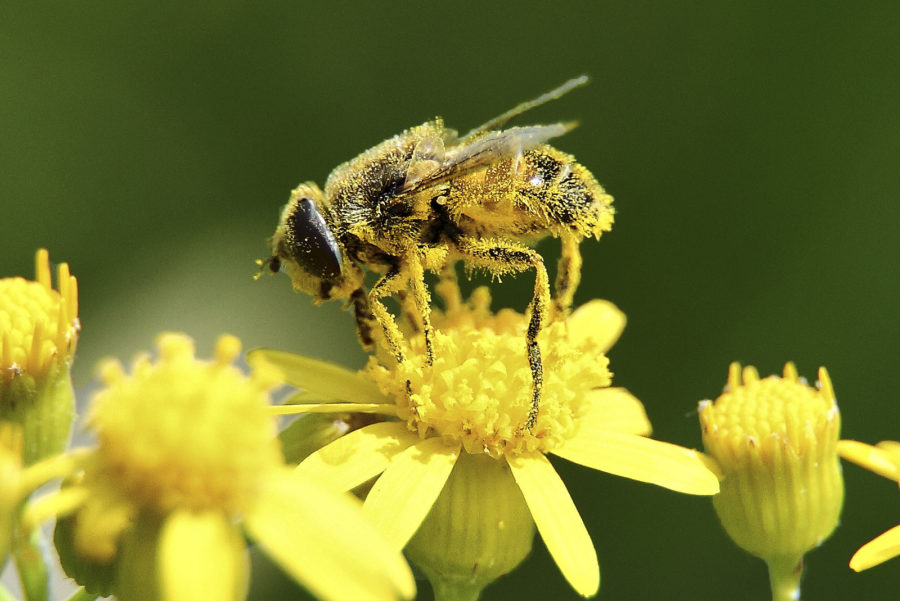
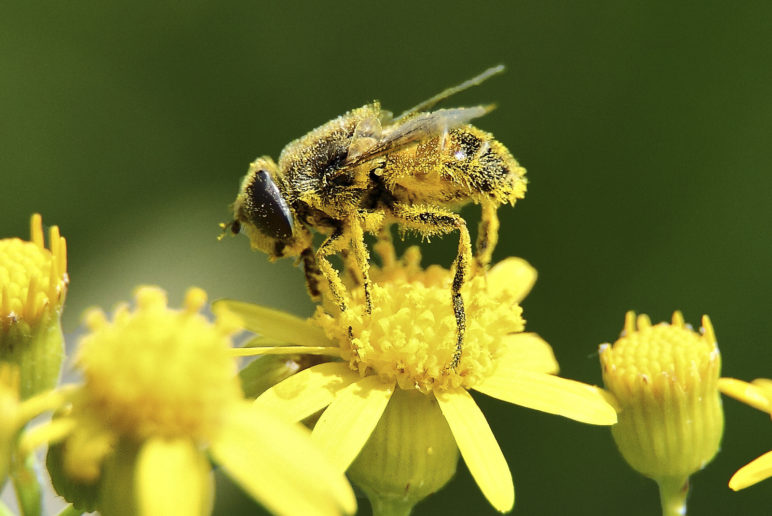


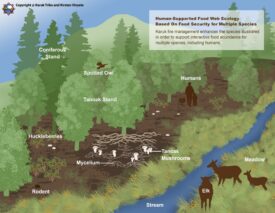
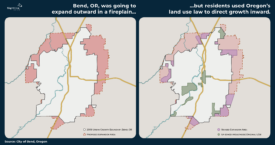
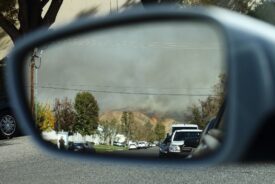



Glen Buschmann
Oh good grief! You and I both know that sensationalist scare titles are not the mark of good science. Yes some bee populations are in decline and yes neonicotinoids may have a role to play in this. But the decline of honey bees is clearly multifactorial, including introduced pests such as Varroa mites as well as too many novice bee-keepers. Many of the other bees in decline (remember, there are 4000 different species of bees in North America) are as much challenged by habitat fragmentation and loss as they are by pesticides.
Eric de Place
Glen, thanks for writing. We’re modifying the headline to make it more consistent with the article. And the article, I think, does not make sensationalist claims, but does point out the regulatory sluggishness of EPA.
John Abbotts
We stand by the substance of the article.
In addition, this is not the first time Sightline commented on neonics. Here is a Weekend Reading item from Anna Fahey (near the bottom of that article). The pesticide in question was the neonic imidacloprid. Link at https://www.sightline.org/2016/01/22/weekend-reading-12216/
Even earlier, Clark made this comment, at https://www.sightline.org/2012/09/21/weekend-reading-92112/
In addition, after the European Union implemented its ban on the three top-selling neonics, 232 scientists signed a letter to Science magazine. Their comments included the following: “It is the view of the undersigned scientists that the balance of evidence strongly suggests that these chemicals are harming beneficial insects and contributing to the current massive loss of global biodiversity. As such, there is an immediate need for national and international agreements to greatly restrict their use, and to prevent registration of similarly harmful agrochemicals in the future.” Link at http://science.sciencemag.org/content/360/6392/973.1
Yes, multiple factors are suspected to contribute to bee colony collapse, and one of them is climate change, link at https://blog.conservation.org/2017/08/the-buzz-on-climate-change-its-bad-for-bees/
And how do readers think the petrochemical industry is treating the climate?
Robert Guntren
I am a commercial honey producer (beekeeper). This past spring a farm that was and is providing me with a spot (an Apiary) for some of my beehives. On this farm I have 18 beehives (colonies) of honeybees. When the farmer planted corn using seed coated with IMIDACLOPRID (a Bayer ) product. the dust in the air from this neonic insecticide caused a tremendous honeybee loss due to this insecticide. If neonic insecticides are not restricted use insecticides, they should be. Farmers are so indoctrinated with the chemical use mentality they are just plain ignorant of whats happening to those around them.
John Abbotts
Hello Robert,
Thank you for your comment and interest in Sightline’s work. If you have not already done so, you may want to you to submit an incident report to EPA, using their beekill email, accessed through https://www.epa.gov/pollinator-protection/report-bee-kills
Even under this administration, EPA offers the opportunity for public comment. As the article notes EPA’s label amendments in 2013 and the negative publicity on neonics resulted in a drop by about half of neonic use. One can view the effects on a pesticide map maintained by the US Geological Service, with a chart for use at the bottom (2016 being the most recent data plotted), at https://water.usgs.gov/nawqa/pnsp/usage/maps/show_map.php?year=2016&map=IMIDACLOPRID&hilo=L
Yes, 2013 was the Obama administration, but with 2020 coming up, Trump is starting to at least talk big about the environment.
I am also guessing that beekeeper organizations/trade groups are already working to restrict neonics, and you may want to connect with one of those, if you have not already.
If you want to do more, NRDC offers action items at https://www.nrdc.org/save-bees. I will try to refrain from singing Solidarity Forever (cannot post my voice here anyway), but connecting with others is a way to overcome, “The feeble strength of one.”
NRDC offers the chance to sign on to their letter to EPA, and/or to their letter to Amazon asking that trillion-dollar giant to stop selling neonics. Note that by signing either letter you will receive follow-up emails from NRDC, but the choice is yours, on NRDC or any of my other suggestions.
After all, people do have their own lives and need to put food on the table, so please feel free to pick and choose as you see fit.
Best wishes,
Floyd Williams
I agree totally that the use of these pesticides and others is out of hand and getting worse. I have kept honey bees for many years and have had losses from . With the administration in Washington today it will continue to be a problem.
I don’t mean to seem critical but when an organization posts about honey bees they should at least make sure the photo at the top is actually a honey bee…..this is one of the many bee mimic Syrphid flies, which is by the way an important pollinator, but it is not a honey bee. Poor editing can lead to distrust in posting information. Thanks
John Abbotts
Hello Floyd,
Thank you for your comment, interest in Sightline’s work, and fact check. For photos, Sightline editors depend on sources that are not copyrighted. The narrative for the photo identifies the source as Flickr nder a Creative Commons license. The photo in turn came from a Flickr galley titled “honey bees” at https://www.flickr.com/photos/honeycolony/galleries/72157634414783770/
If you can advise which of the photos in that gallery shows an actual honey bee, then I can pass your designation along to Sightline’s editors.
I can check back in a few days to see if you are still following the comment thread.
John Abbotts
In the meantime, an update from the Natural Resources Defense Council (NRDC), which reached an agreement with the Biden/Harris EPA a few days after inauguration. The agreement requires EPA to evaluate the impacts of imidacloprid, one of the most commonly used neonicotinoid pesticides, on endangered and threatened bees, butterflies, birds and other wildlife as required by the Endangered Species Act (ESA). The agreement sets a deadline for the Agency to do its ESA analysis of imidacloprid, to settle part of a lawsuit brought by NRDC.
As Sightline readers are aware, “Neonicotinoids, including imidacloprid, have been implicated in bee die-offs and found to have significant impacts on a wide range of species.” Link to NRDC’s press release, which also reports that the parties have not settled on two other neonicotinoids, at https://www.nrdc.org/media/2021/210128-0
The press release also contains its own link to the full agreement.
All stay safe,
John Abbotts
And, an update, to anyone still checking the comment thread. I literally, “heard on NPR,” as the saying goes, comments debunking industry propaganda based on experiences in Quebec [as noted elsewhere, Health Canada follows the “precautionary principle,” incorporated into law there, but not in the US.]
Details are contained in testimony of a Quebec agricultural scientists to a Minnesota House Agriculture and Policy Committee, see https://www.house.mn.gov/comm/docs/BwvzdaTLxUGW1xYPv6cOVA.pdf
To summarize, “The undersigned individuals provide the following testimony regarding our experience with
neonicotinoid-treated corn and soybean seeds in Québec, the science regarding their lack of
benefit to farmers, and our personal experience with industry interference in exposing the truth
of that science.”
Just a few details: In April 2019, the Department of Environment of the Province of Québec required that anyone wishing to use neonicotinoids needed a written recommendation from one of the
Province’s 3,300 registered agronomists.
This moved the standard for pesticides require “verification of need,” in Quebec for approval.
As an analogy, US Food and Drug Administration (USFDA) requires that medicines must be shown “safe and effective,” before approval. Pesticides arguably are not safe since they are designed to kill pests, hence the -cide suffix.
But even in the US and elsewhere, they need to be analyzed for minimal harm to humans and wildlife.
Well, one of the industry counterarguments was that neonics were necessary to increase crop yields, but agricultural researchers in Quebec and elsewhere debunked that claim, with publications cited in the link above.
In addition, the witnesses describe how the researchers were pressured by industry and by their own Quebec administrators “to prevent the publication of public funded research that showed no
advantages from the use of neonicotinoids.”
One scientific administrator was fired after he leaked the research data, but was later reinstated and fully compensated after an official inquiry found that he had gone through all proper channels under their “Whistleblowers Act,” before leaking the results.
The lead researcher on the crop yield studies resigned from her Quebec science center, fought to recover the copyright for the study, and published in 2020.
The link above to testimony also reports that US agricultural researchers have also found minimal impact on crop yields, positive or negative, from neonics. But of course, “verification of need,” has not been incorporated in US pesticide law, thanks to the terrible power of the toxic petrochemical industry.
All stay safe,